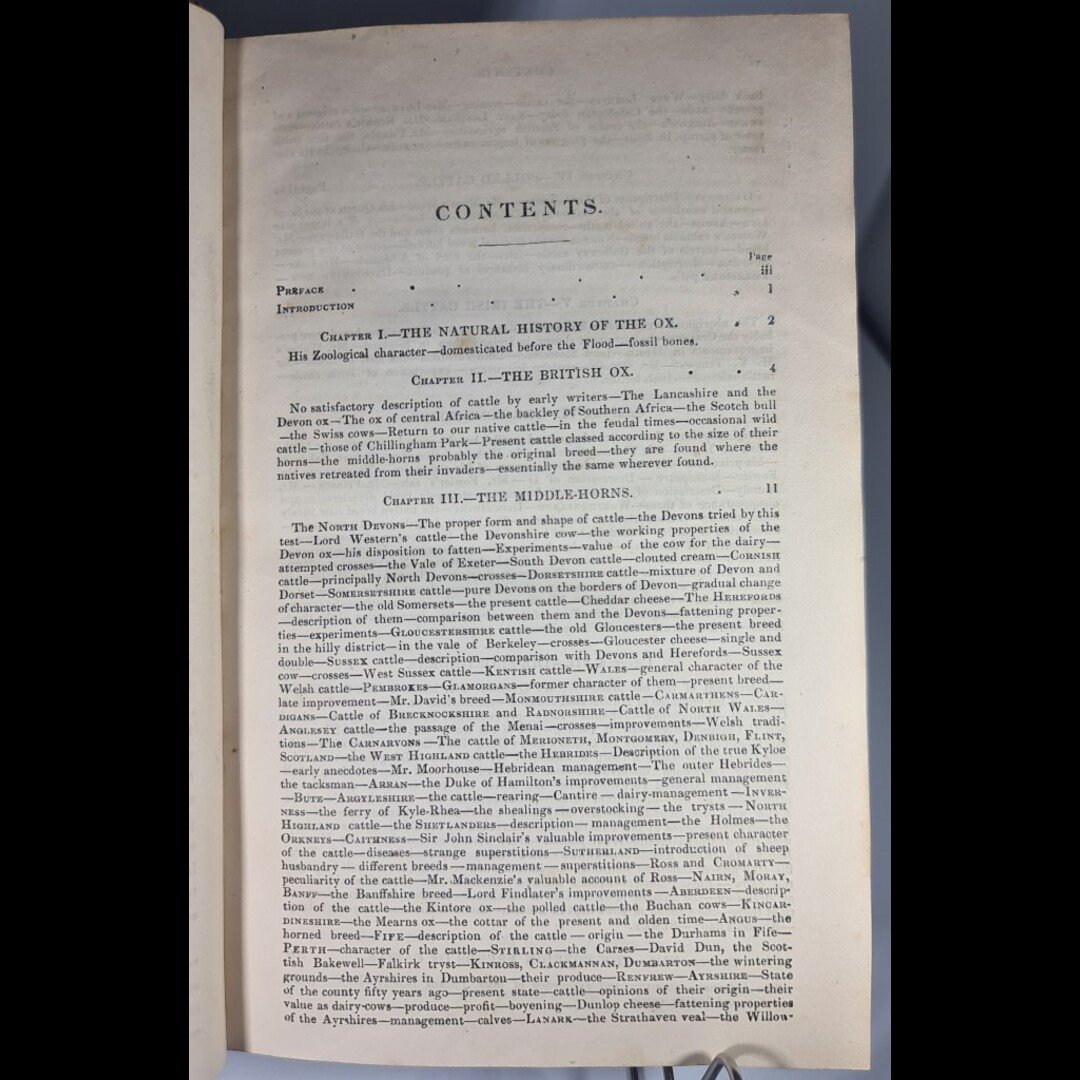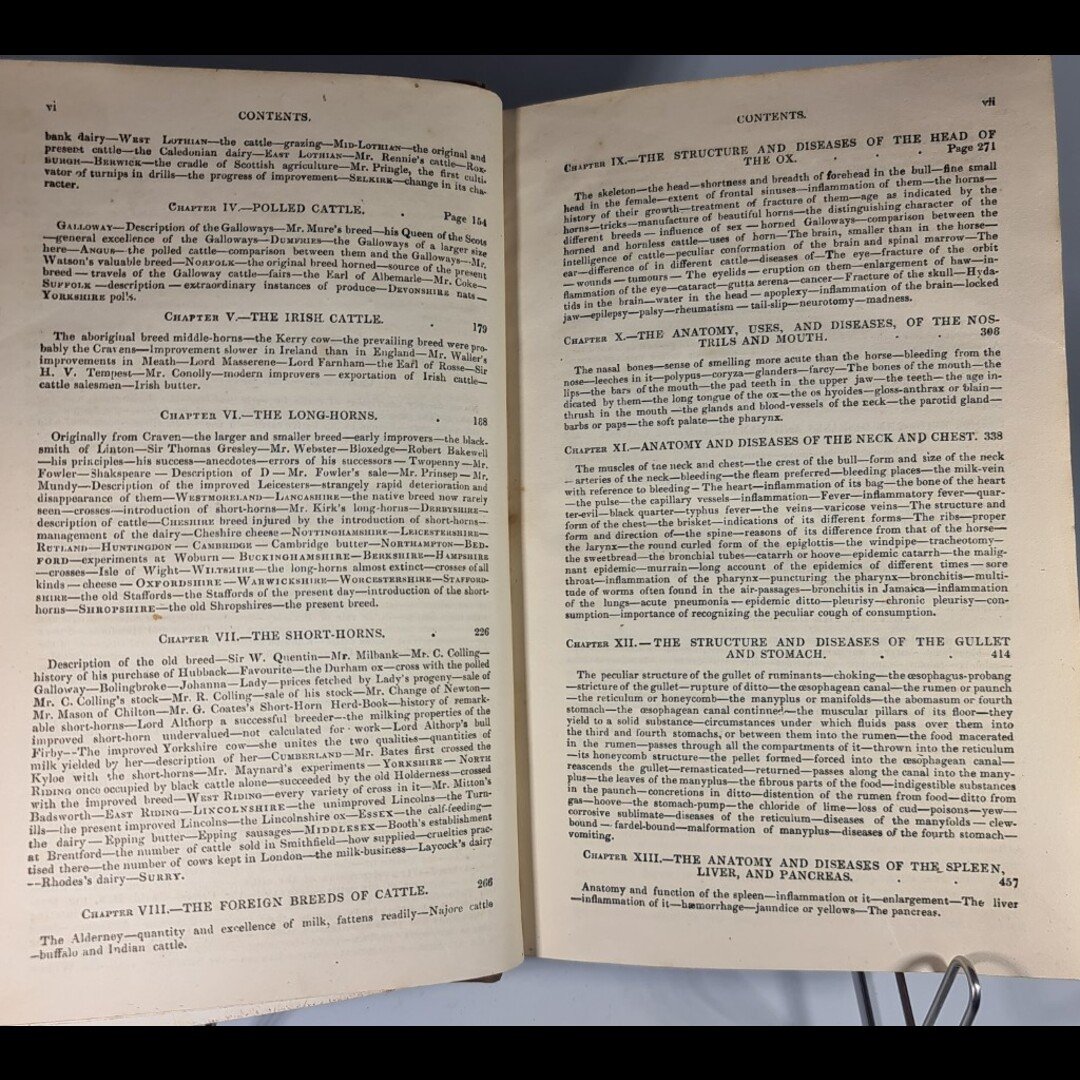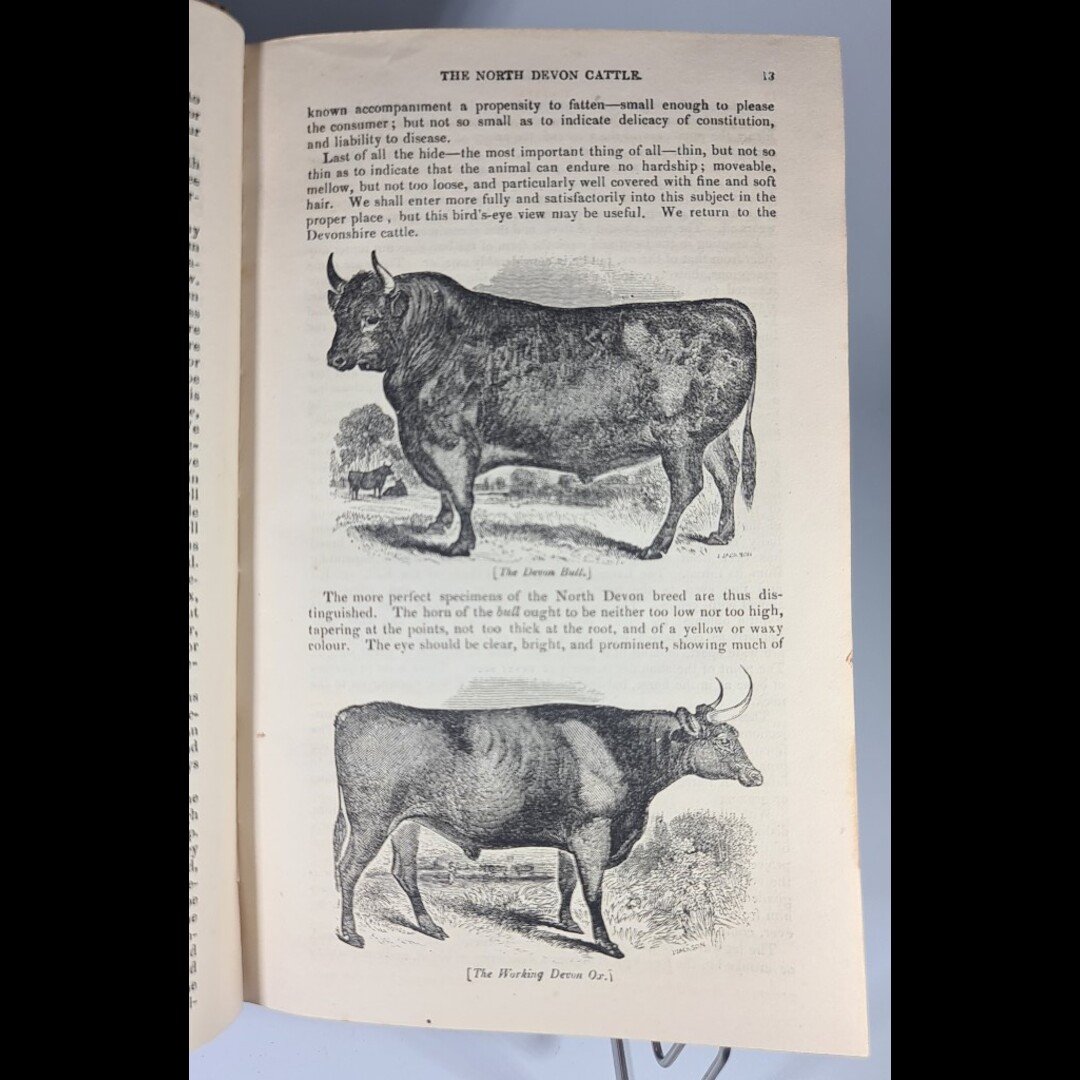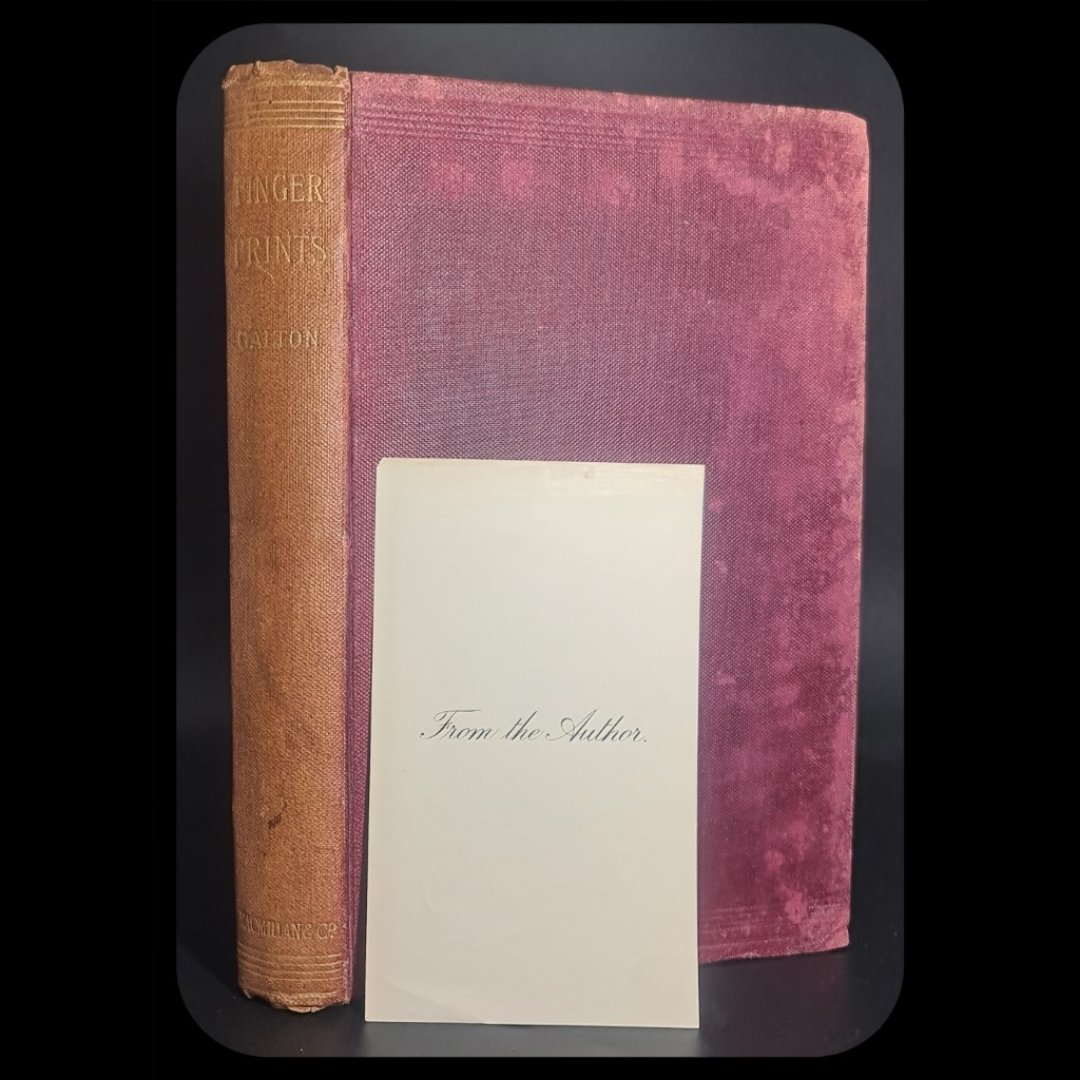 Image 1 of 16
Image 1 of 16

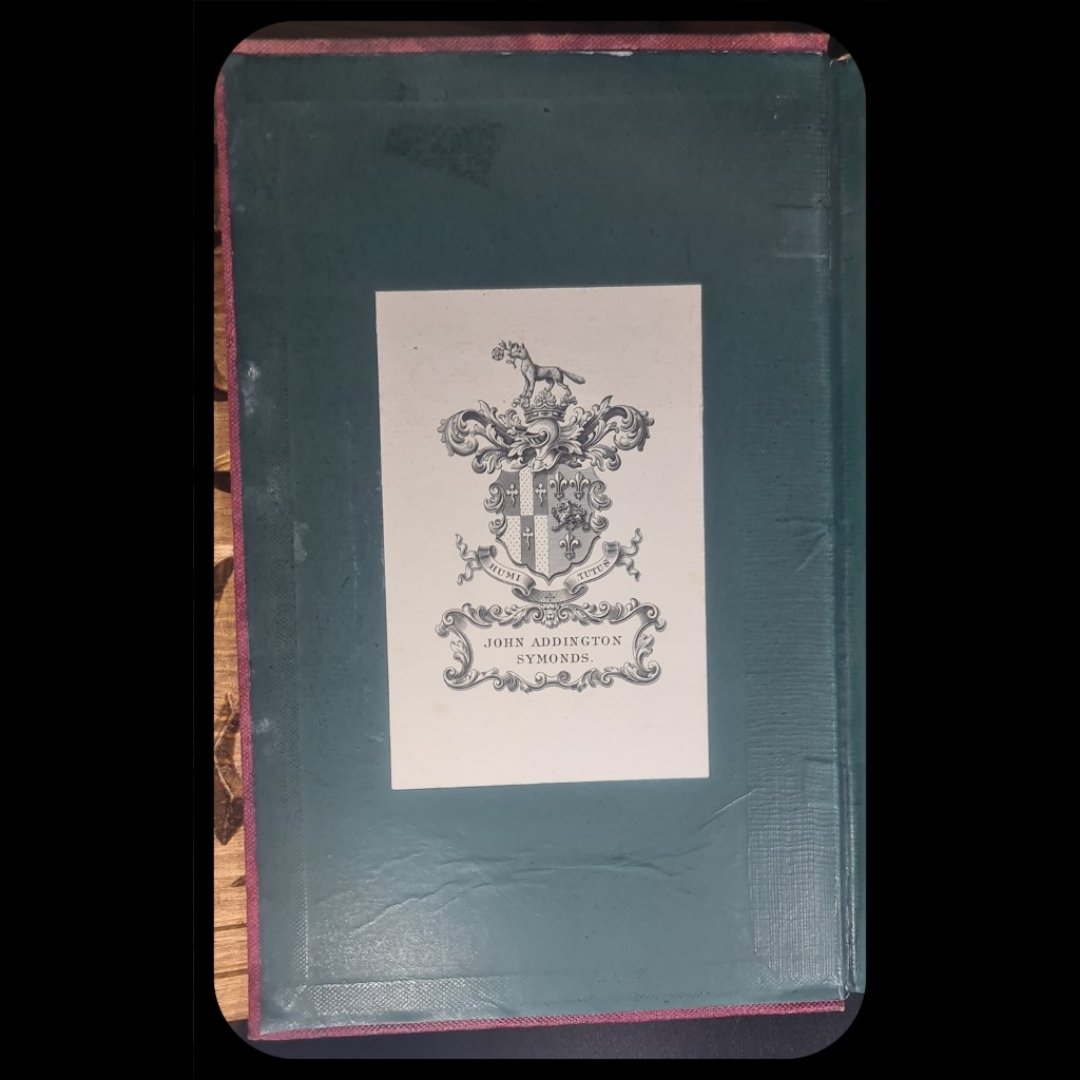 Image 2 of 16
Image 2 of 16

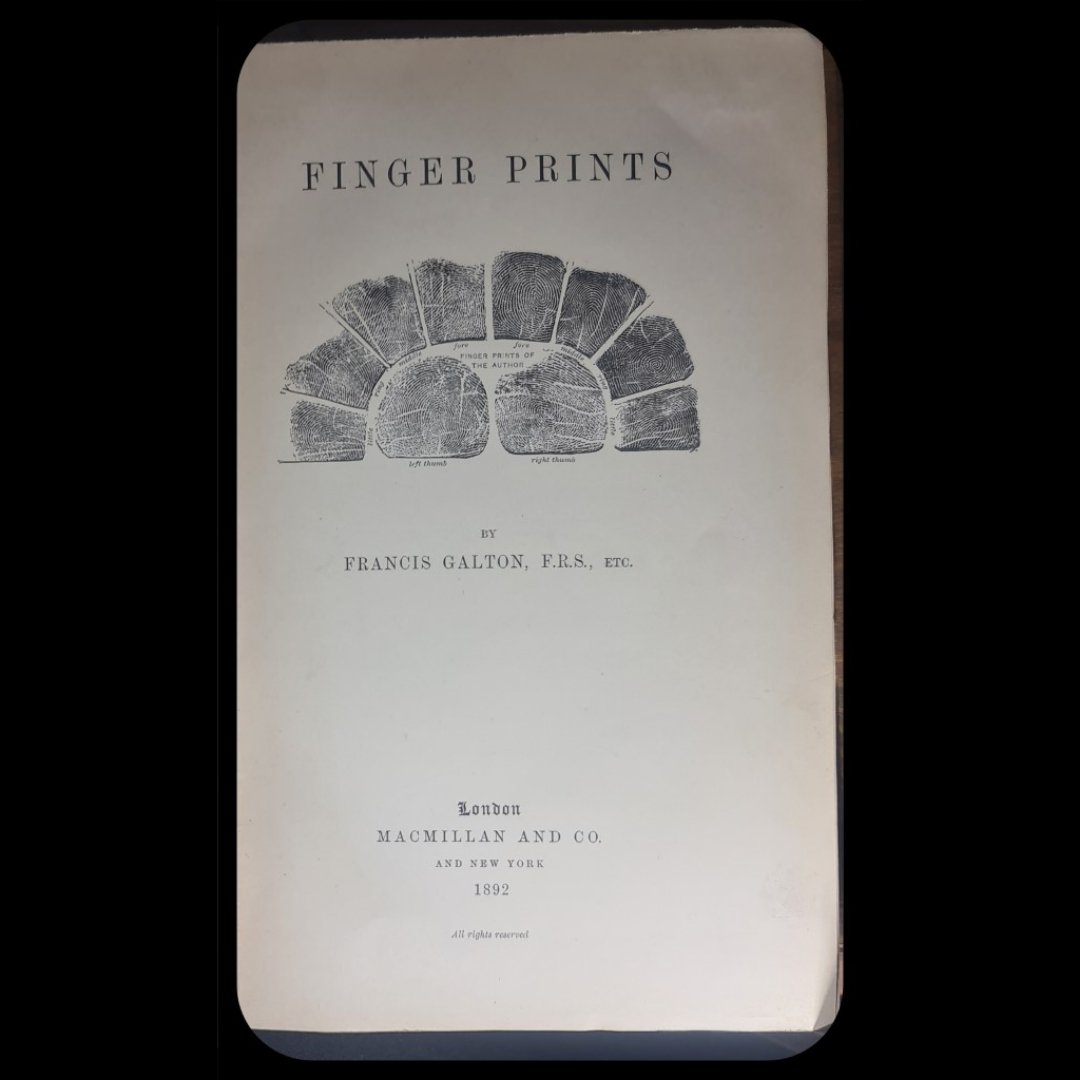 Image 3 of 16
Image 3 of 16

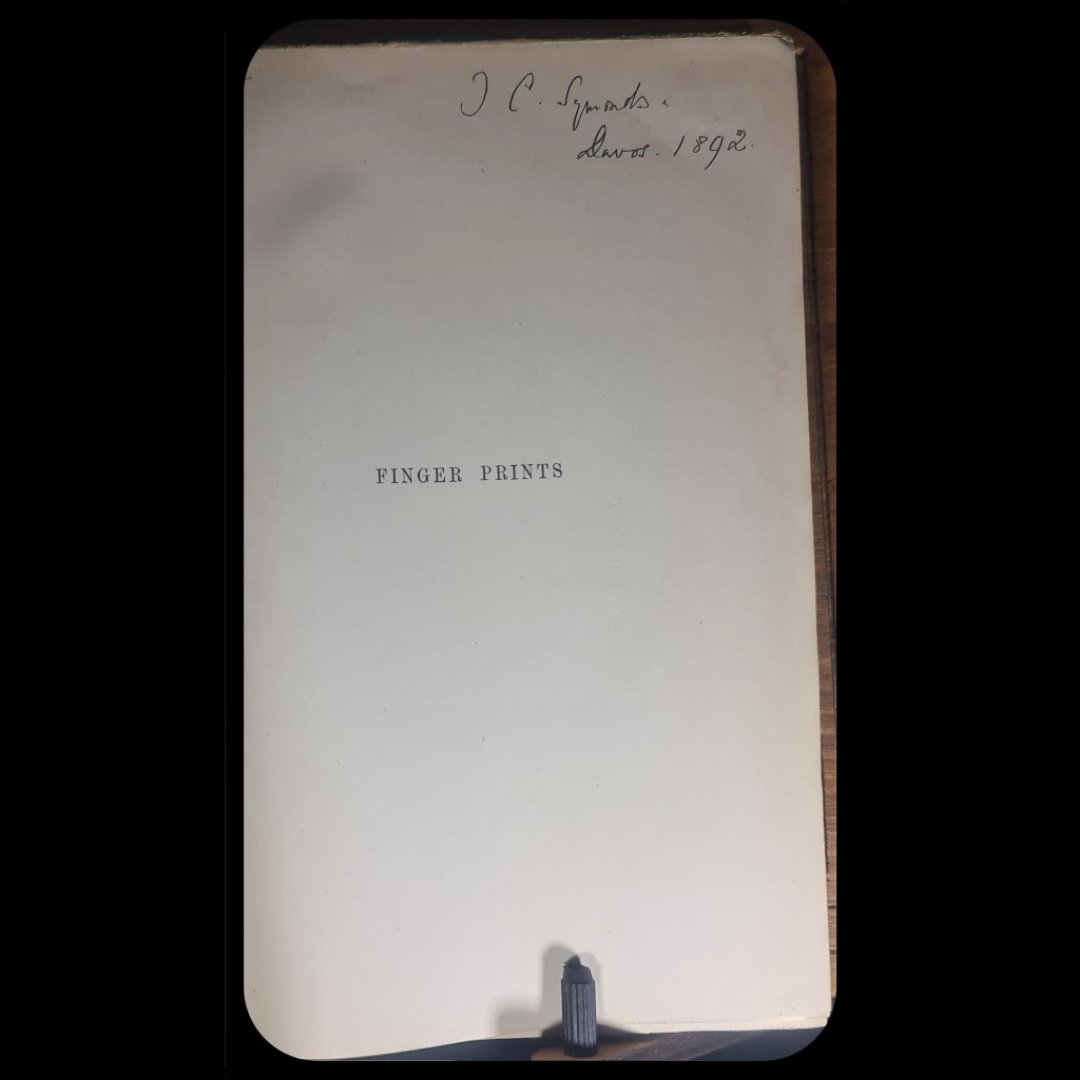 Image 4 of 16
Image 4 of 16

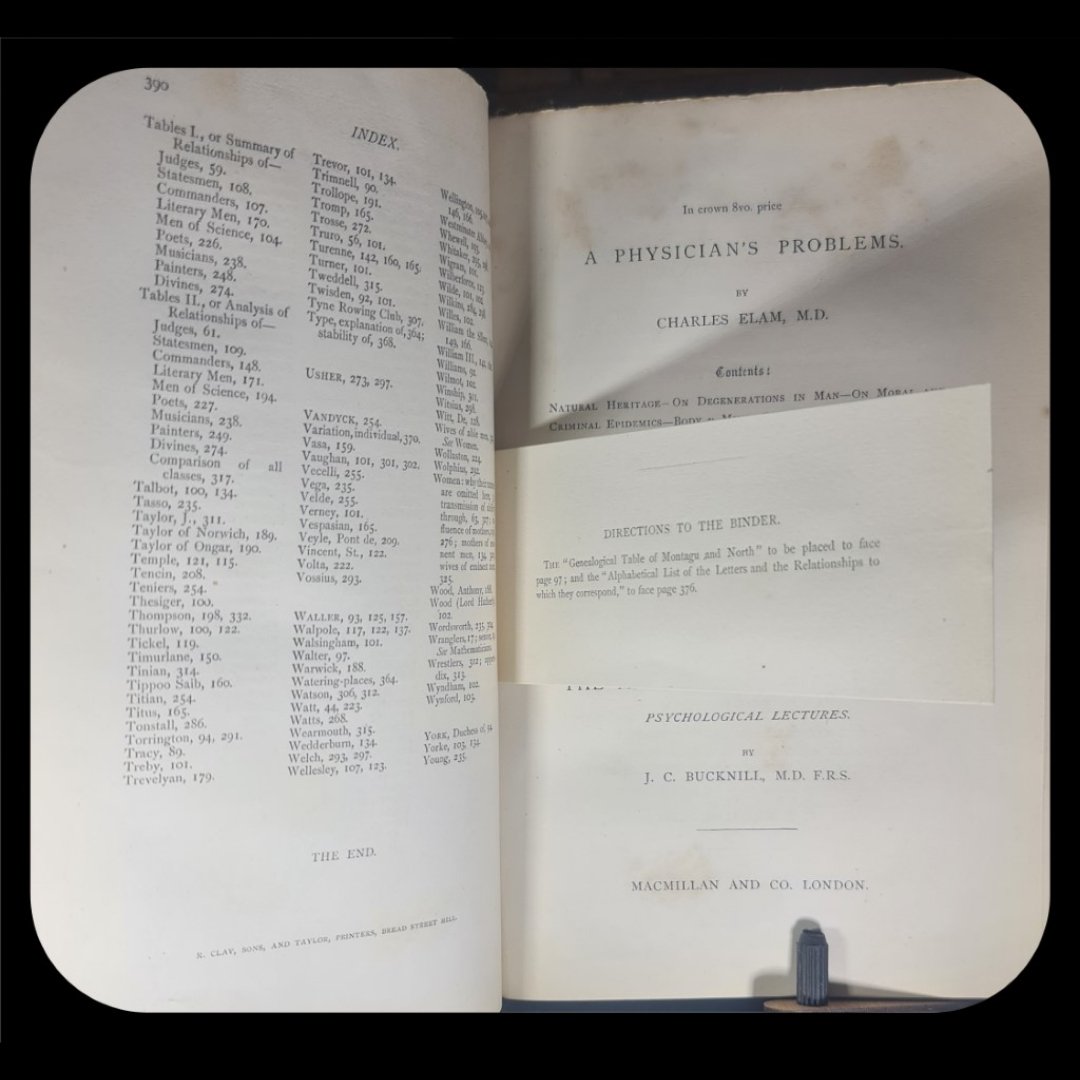 Image 5 of 16
Image 5 of 16

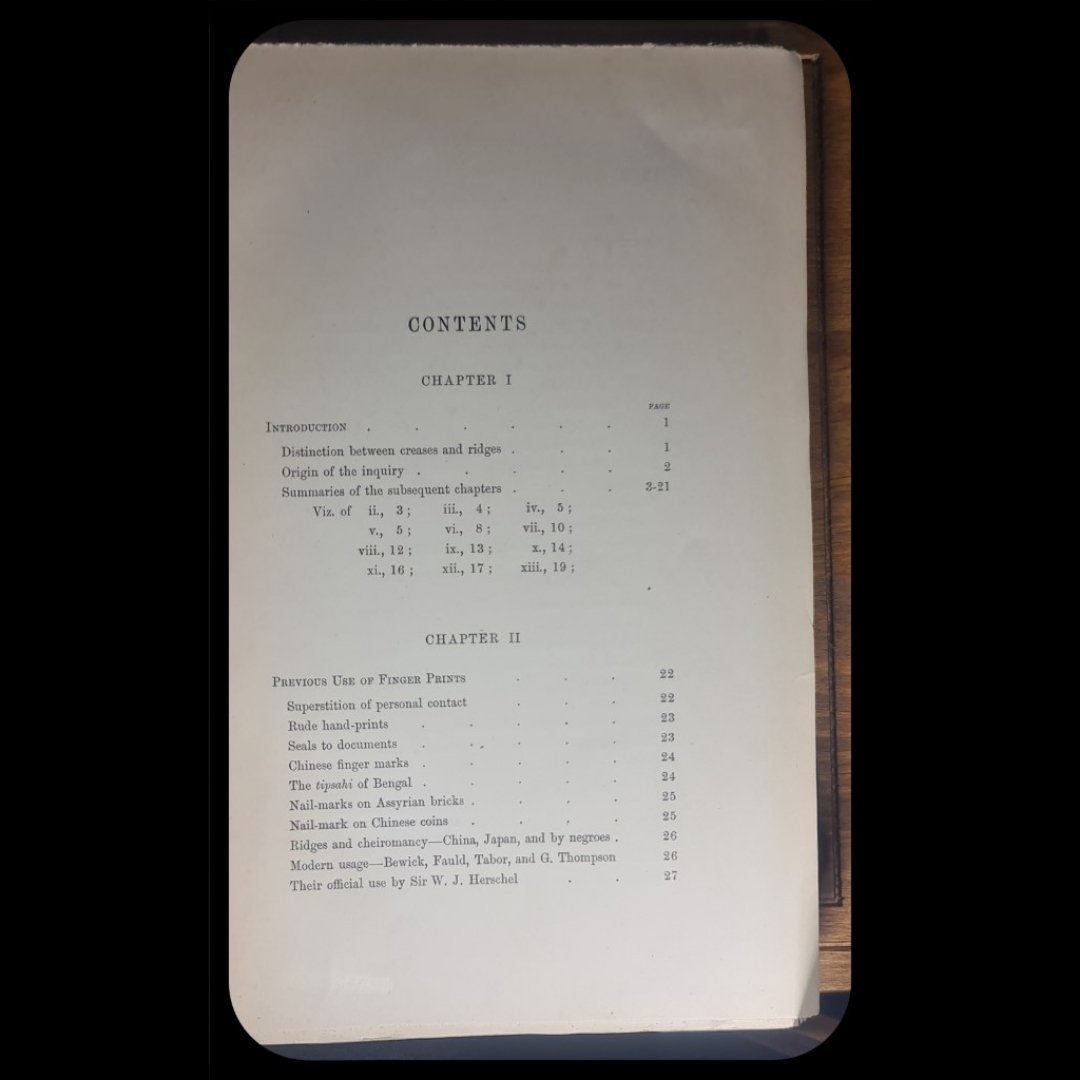 Image 6 of 16
Image 6 of 16

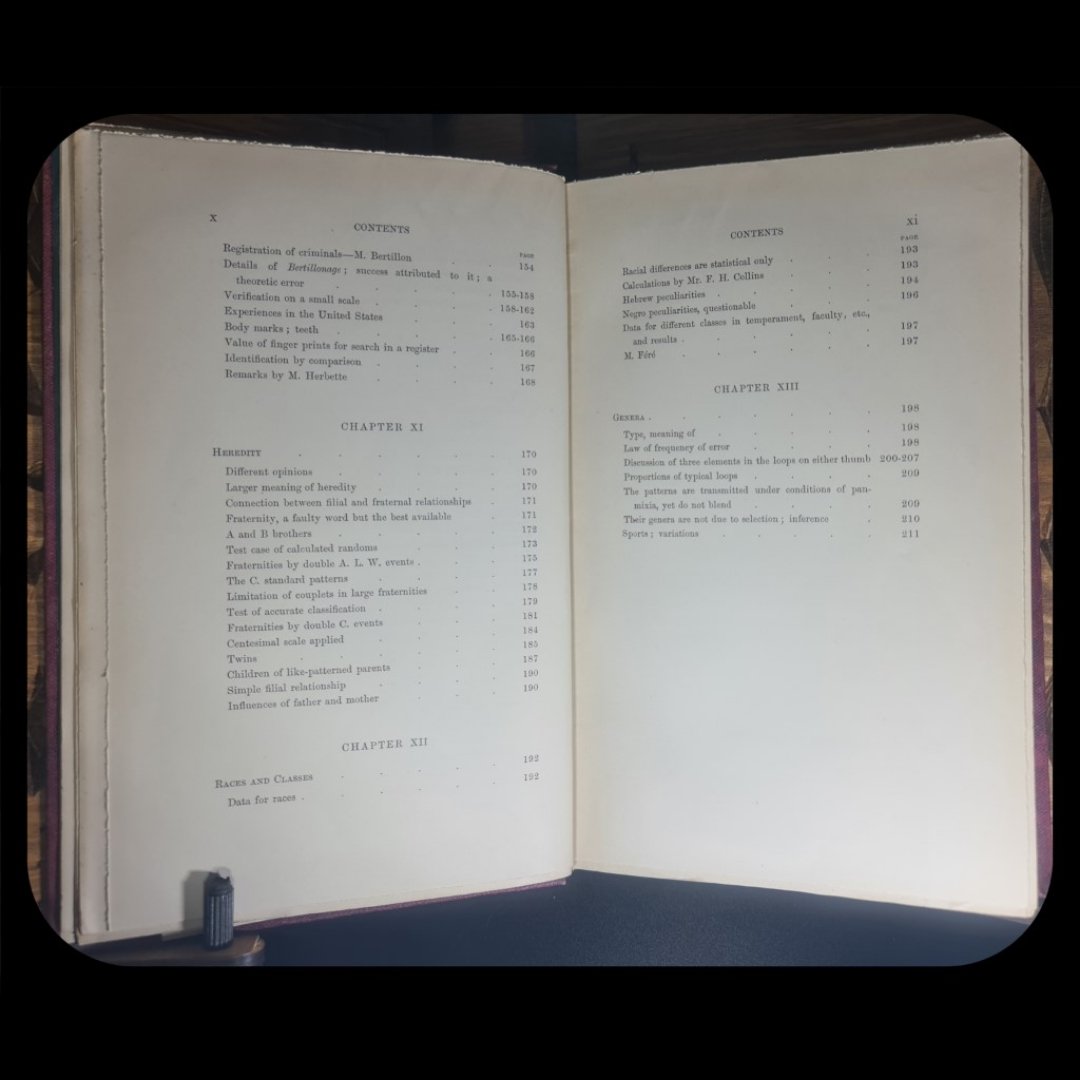 Image 7 of 16
Image 7 of 16

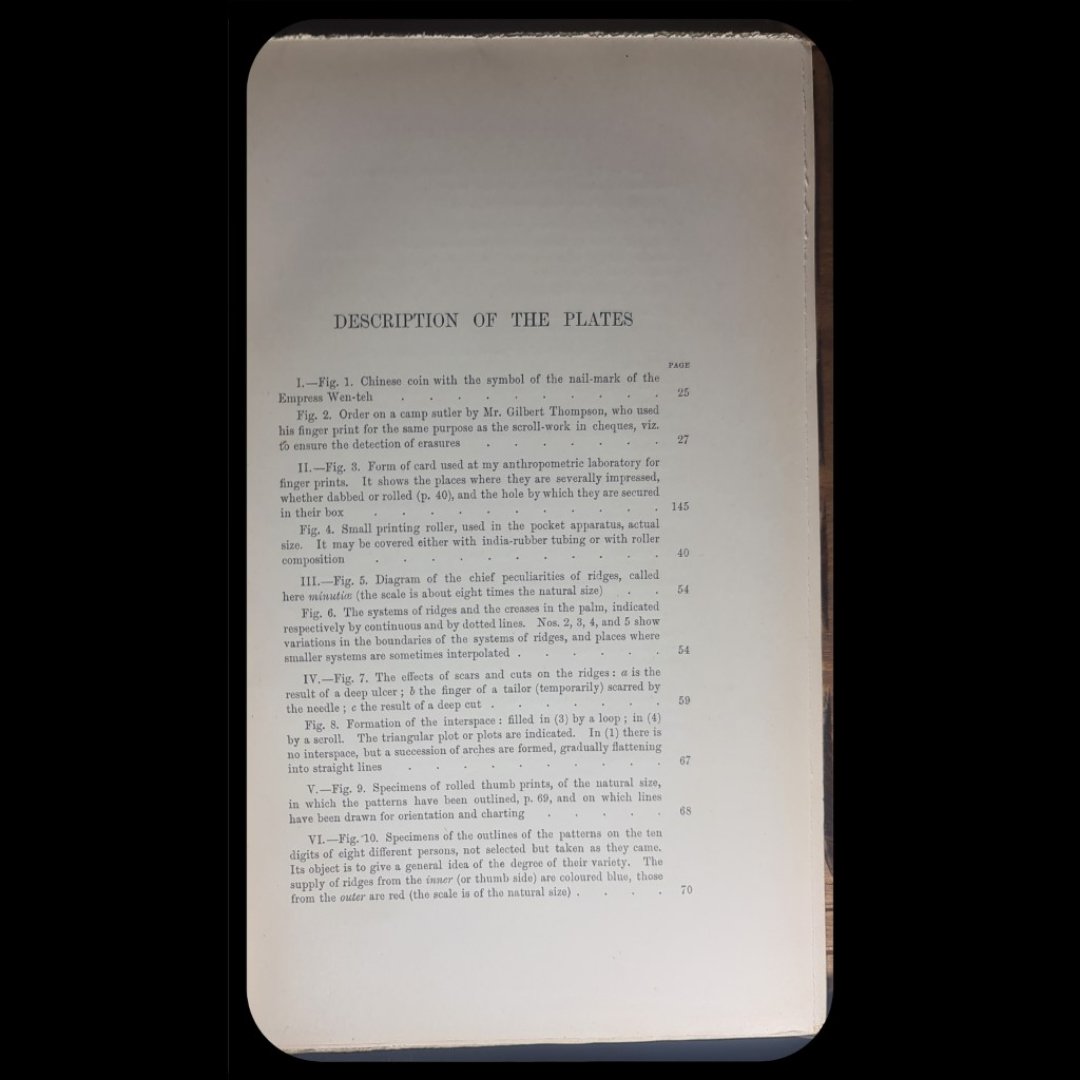 Image 8 of 16
Image 8 of 16

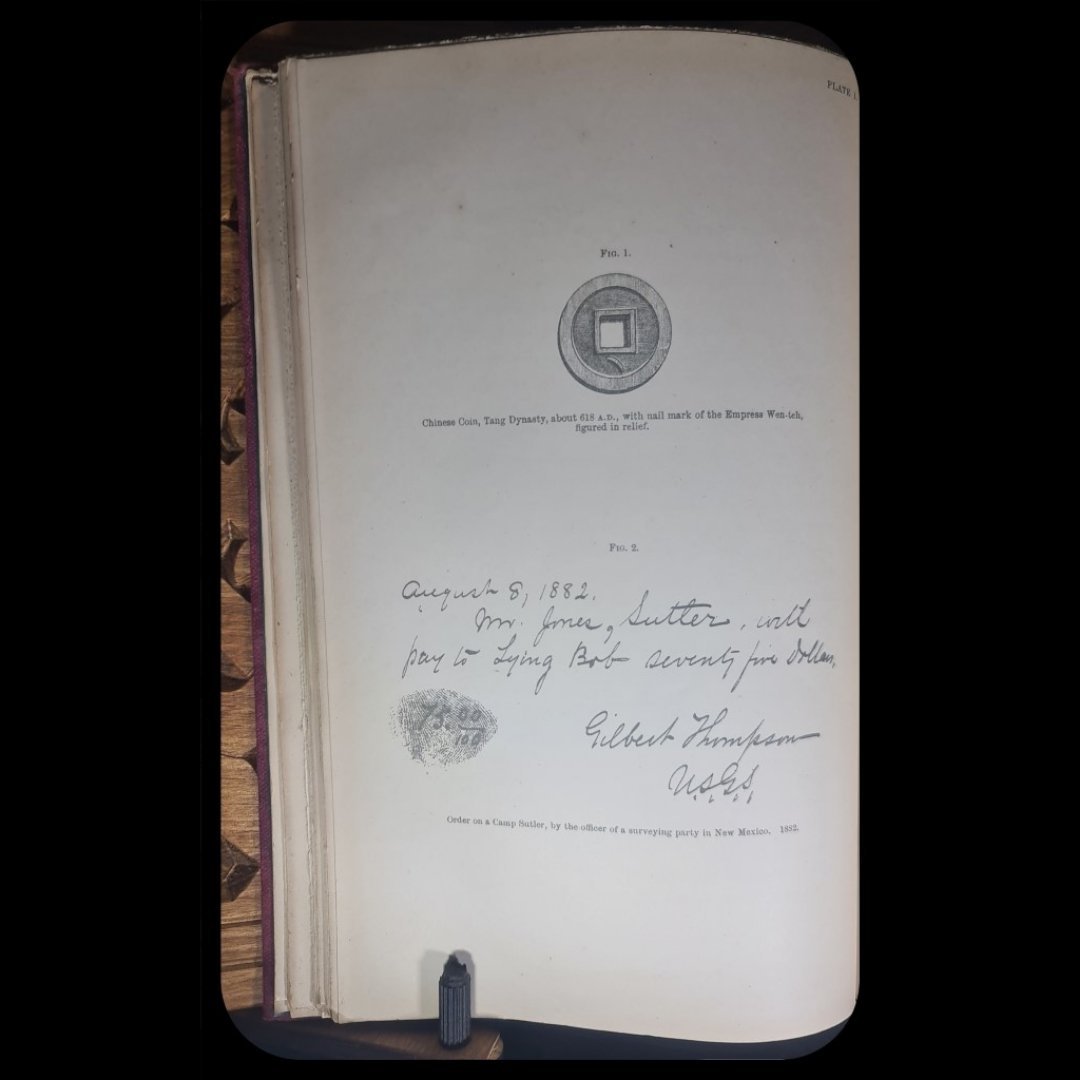 Image 9 of 16
Image 9 of 16

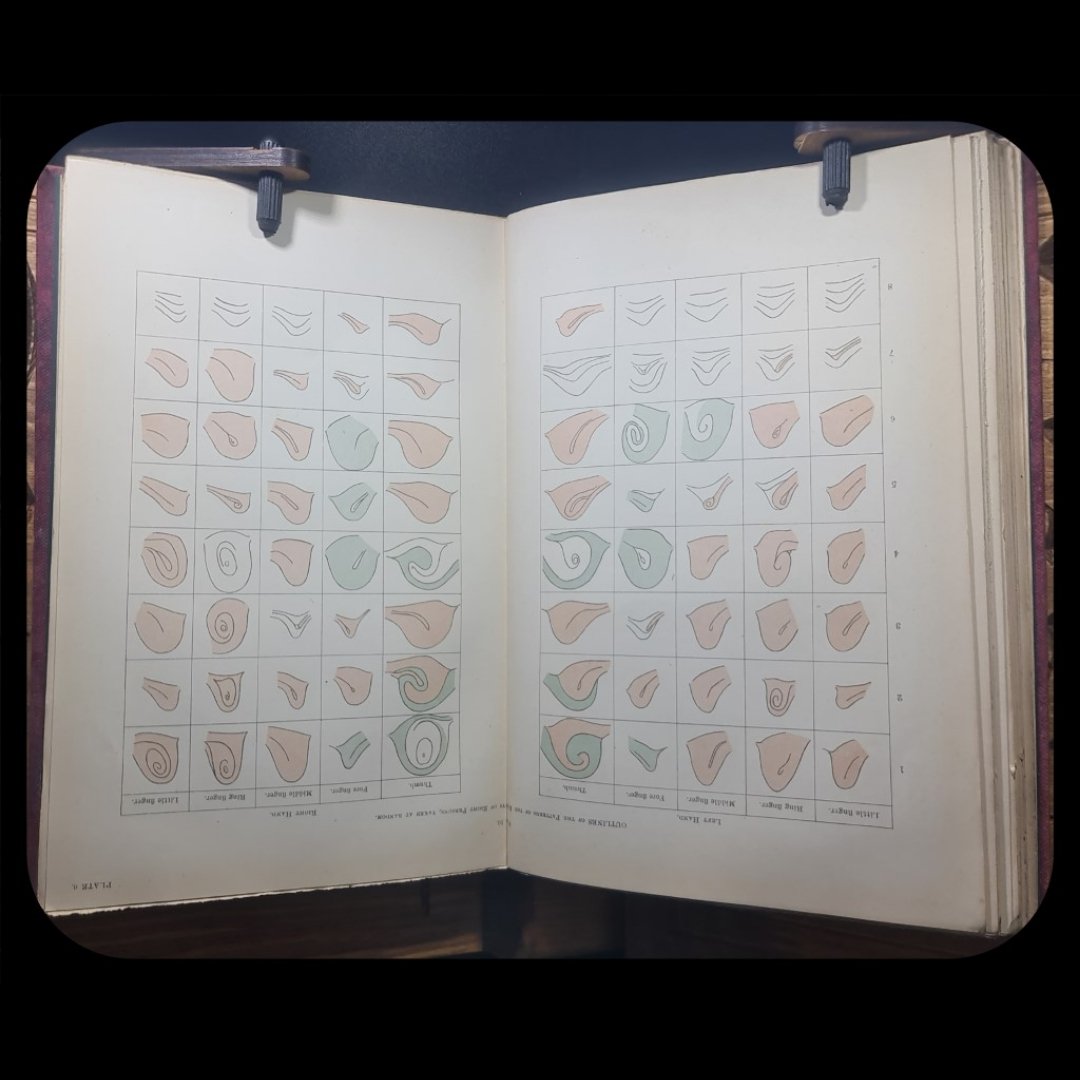 Image 10 of 16
Image 10 of 16

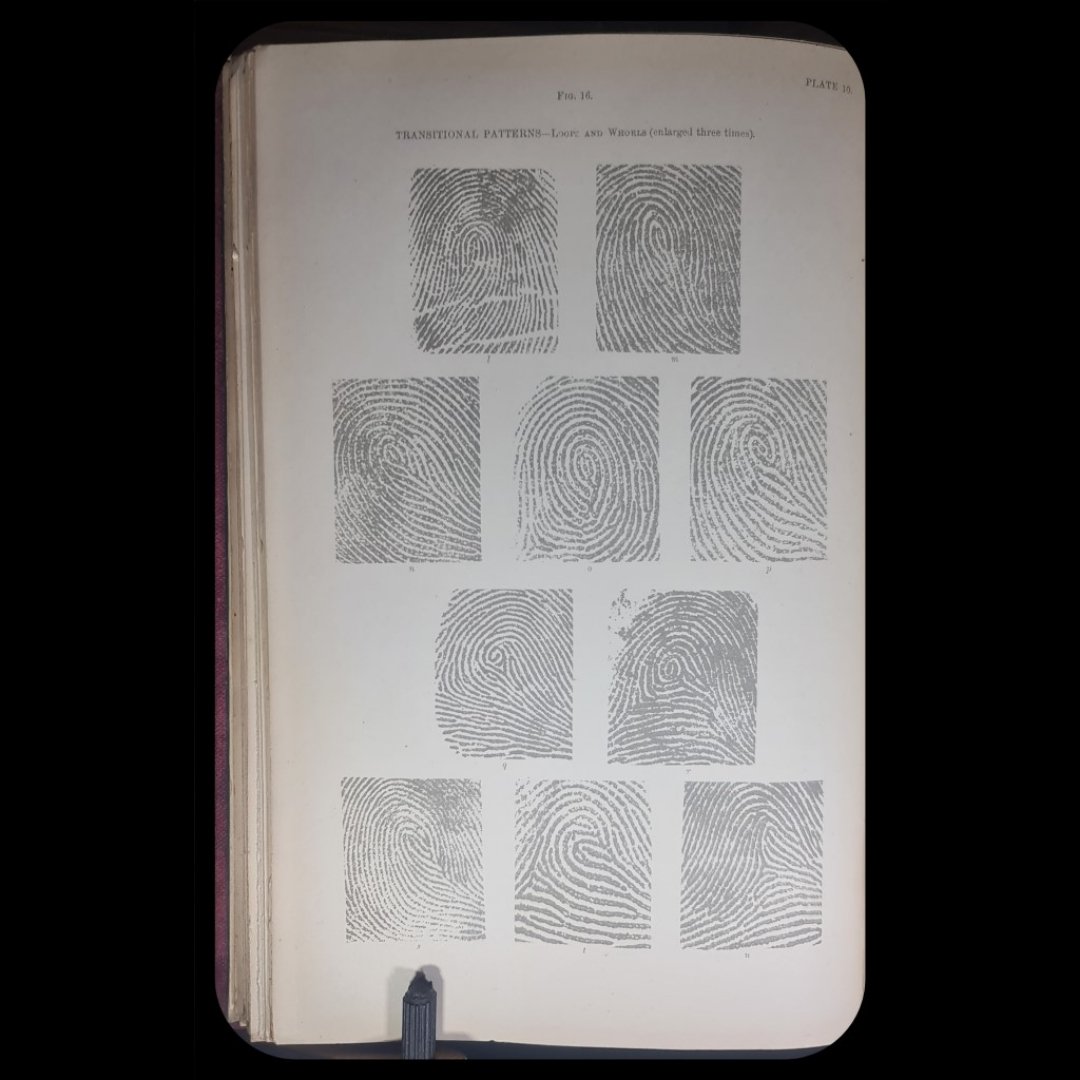 Image 11 of 16
Image 11 of 16

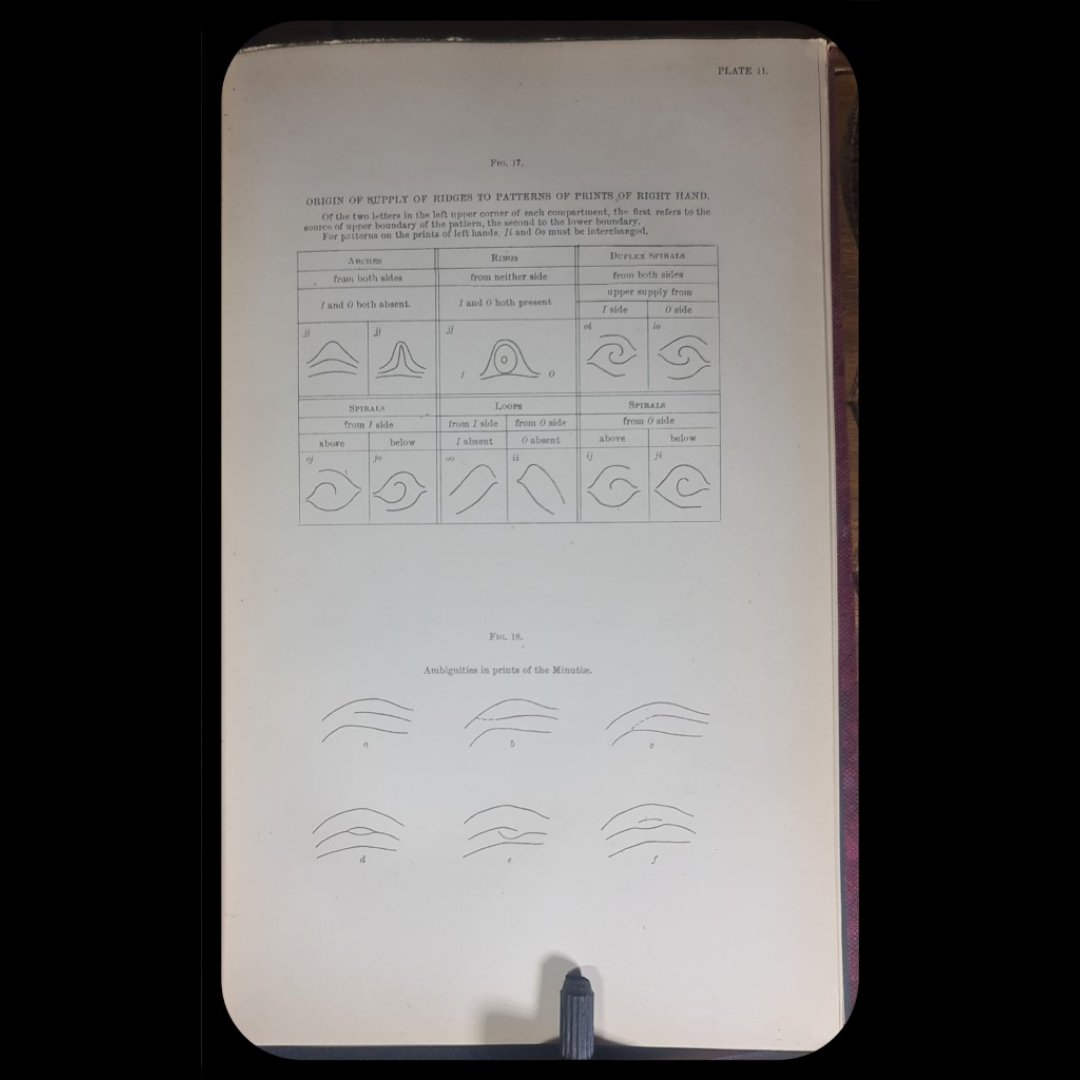 Image 12 of 16
Image 12 of 16

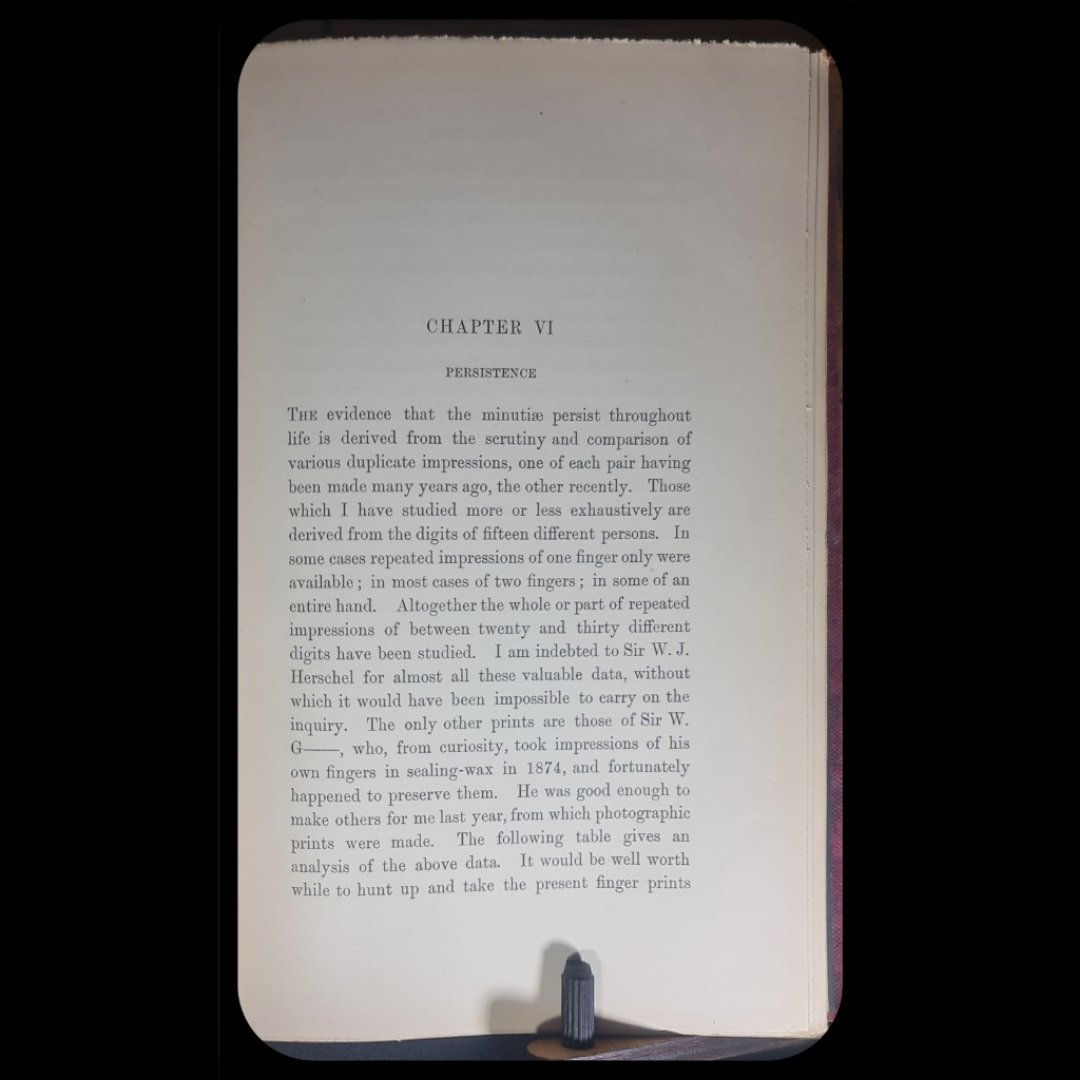 Image 13 of 16
Image 13 of 16

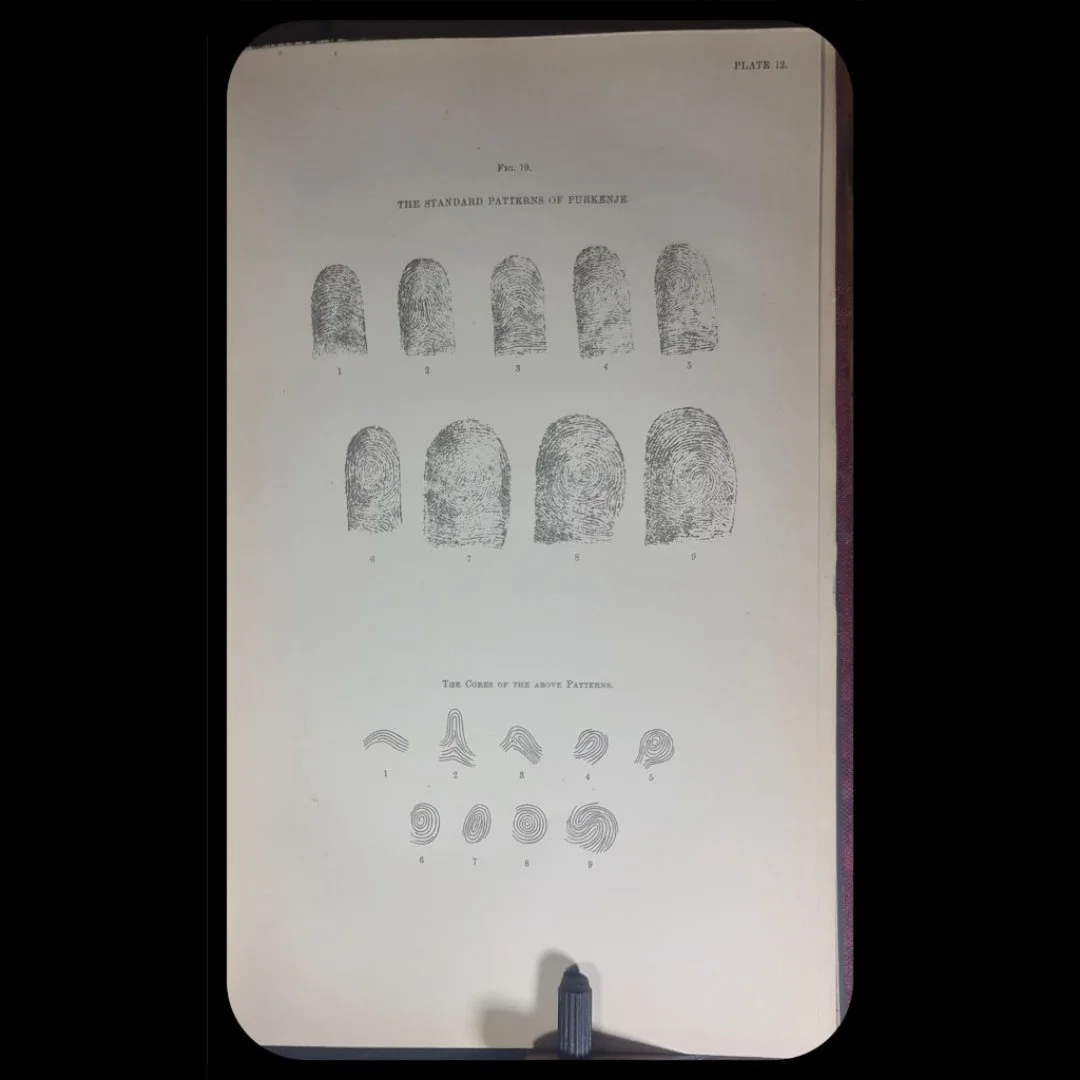 Image 14 of 16
Image 14 of 16

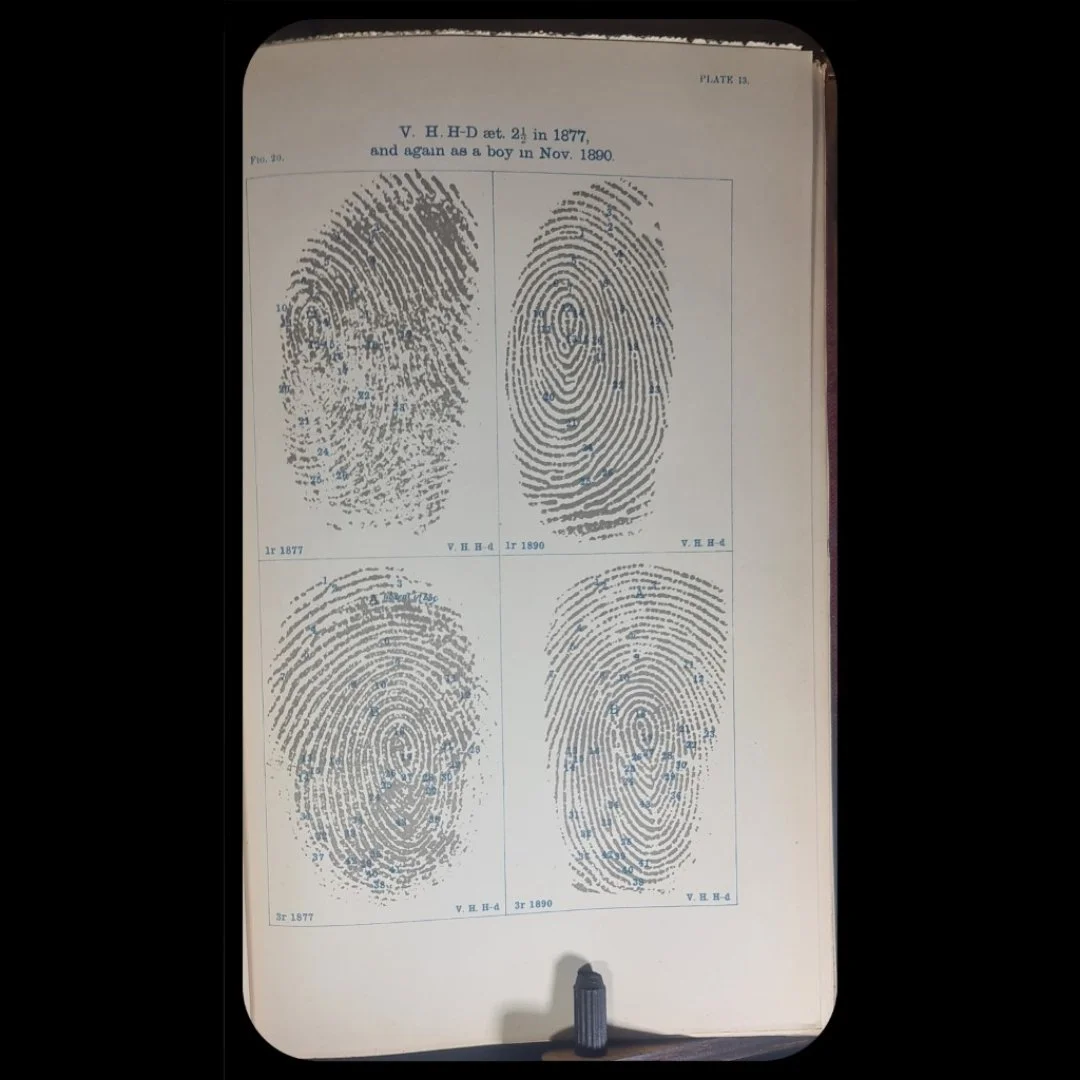 Image 15 of 16
Image 15 of 16

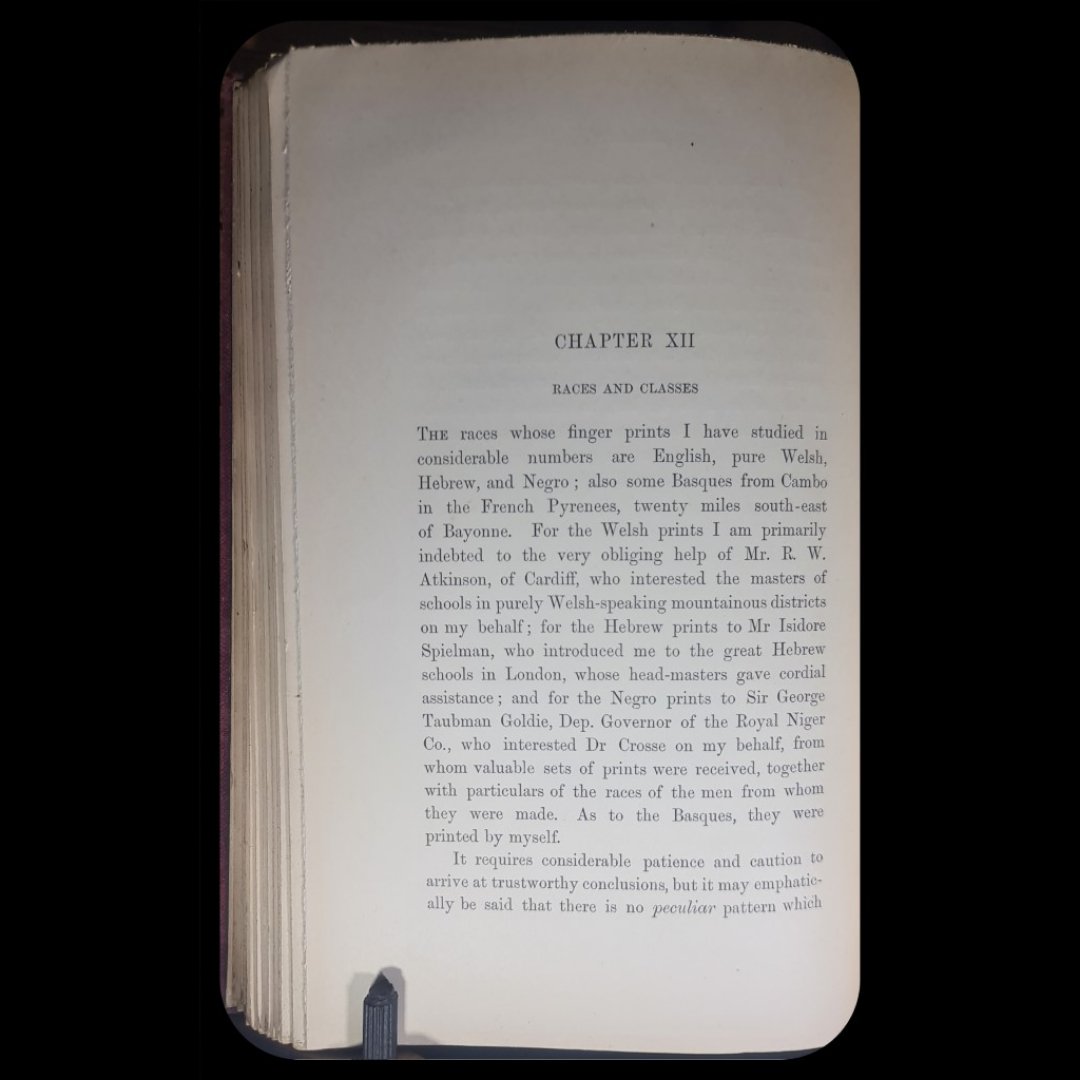 Image 16 of 16
Image 16 of 16

1892 1st Edtn With Provenance FINGER PRINTS By Francis Galton Illus. Very Good Science
1892 1st Edition , With Provenance
FINGER PRINTS
By Francis Galton
Sir Francis Galton, FRS FRAI (16 February 1822 – 17 January 1911), was an English Victorian era polymath: a statistician, sociologist, psychologist, anthropologist, tropical explorer, geographer, inventor, meteorologist, proto-geneticist, psychometrician and a proponent of social Darwinism, eugenics, and scientific racism. He was knighted in 1909. Galton produced over 340 papers and books. He also created the statistical concept of correlation and widely promoted regression toward the mean. He was the first to apply statistical methods to the study of human differences and inheritance of intelligence, and introduced the use of questionnaires and surveys for collecting data on human communities, which he needed for genealogical and biographical works and for his anthropometric studies. He was a pioneer of eugenics, coining the term itself in 1883, and also coined the phrase "nature versus nurture". His book Hereditary Genius (1869) was the first social scientific attempt to study genius and greatness.
As an investigator of the human mind, he founded psychometrics (the science of measuring mental faculties) and differential psychology, as well as the lexical hypothesis of personality. He devised a method for classifying fingerprints that proved useful in forensic science.
Illustrated By: N/A
Format: Hardcover,
Language: English
Dust Jacket: No Jacket, Dust Jacket Condition: No Jacket
Published By: MacMillan & Co, London
octavo (8vo 6 × 9 152 × 229),Pages 216
ISBN:
1892 1st Edition FINGER PRINTS
By Francis Galton F.R.S., etc.
From the Author Presentation Slip
With Provenance - John Addington Symonds, Jr. (5 October 1840 – 19 April 1893) was an English poet and litrary critic. A cultural historian, he was known for his work on the Renaissance, as well as numerous biograhies of writers and artists.
Francis Galton and Fingerprints
Although Galton was not the first to propose the use of fingerprints for identification (Sir William Herschel had used them in India for this purpose) he was the first to place their study on a scientific basis and so lay the groundwork for their use in criminal cases. He was able to collect a large sample of prints through his Anthropological laboratories, eventually amassing over 8,000 sets. His study of minutiae in prints provided the foundation for meaningful comparison of different prints, and he was able to construct a statistical proof of the uniqueness, by minutiae, of individual prints.
Galton also provided the first workable fingerprint classification system, which was later adapted by E. R. Henry for practical use in police forces and other bureaucratic settings. Most of all, Galton's extensive popular advocacy of the use of prints helped to convince a skeptical public that they could be used reliably for identification.
The first case of fingerprints being used to solve a crime in Great Britain was the conviction of Harry Jackson on a charge of burglary. On 27 June 1902, a burglary took place in a house in London and some billiard balls were stolen. Unfortunately for Jackson, the investigating officer noticed a number of fingerprints on a freshly painted windowsill. Richard Muir, the lawyer selected to prosecute and known for his rigorous attention to detail became convinced of the value of fingerprint evidence. In the resulting court case at the Old Bailey, he persuaded the jury of the absolute reliability of fingerprints. As a result, Harry Jackson was found guilty and sentenced to seven years in prison on 13 September 1902.
John Addington Symonds, Jr. (5 October 1840 – 19 April 1893) was an English poet and literary critic. A cultural historian, he was known for his work on the Renaissance, as well as numerous biographies of writers and artists.
SKU: BTETM0001956
Approximate Package Dimensions H: 12.5, L: 30, W: 25 (Units: cm), W: 2Kg
1892 1st Edition , With Provenance
FINGER PRINTS
By Francis Galton
Sir Francis Galton, FRS FRAI (16 February 1822 – 17 January 1911), was an English Victorian era polymath: a statistician, sociologist, psychologist, anthropologist, tropical explorer, geographer, inventor, meteorologist, proto-geneticist, psychometrician and a proponent of social Darwinism, eugenics, and scientific racism. He was knighted in 1909. Galton produced over 340 papers and books. He also created the statistical concept of correlation and widely promoted regression toward the mean. He was the first to apply statistical methods to the study of human differences and inheritance of intelligence, and introduced the use of questionnaires and surveys for collecting data on human communities, which he needed for genealogical and biographical works and for his anthropometric studies. He was a pioneer of eugenics, coining the term itself in 1883, and also coined the phrase "nature versus nurture". His book Hereditary Genius (1869) was the first social scientific attempt to study genius and greatness.
As an investigator of the human mind, he founded psychometrics (the science of measuring mental faculties) and differential psychology, as well as the lexical hypothesis of personality. He devised a method for classifying fingerprints that proved useful in forensic science.
Illustrated By: N/A
Format: Hardcover,
Language: English
Dust Jacket: No Jacket, Dust Jacket Condition: No Jacket
Published By: MacMillan & Co, London
octavo (8vo 6 × 9 152 × 229),Pages 216
ISBN:
1892 1st Edition FINGER PRINTS
By Francis Galton F.R.S., etc.
From the Author Presentation Slip
With Provenance - John Addington Symonds, Jr. (5 October 1840 – 19 April 1893) was an English poet and litrary critic. A cultural historian, he was known for his work on the Renaissance, as well as numerous biograhies of writers and artists.
Francis Galton and Fingerprints
Although Galton was not the first to propose the use of fingerprints for identification (Sir William Herschel had used them in India for this purpose) he was the first to place their study on a scientific basis and so lay the groundwork for their use in criminal cases. He was able to collect a large sample of prints through his Anthropological laboratories, eventually amassing over 8,000 sets. His study of minutiae in prints provided the foundation for meaningful comparison of different prints, and he was able to construct a statistical proof of the uniqueness, by minutiae, of individual prints.
Galton also provided the first workable fingerprint classification system, which was later adapted by E. R. Henry for practical use in police forces and other bureaucratic settings. Most of all, Galton's extensive popular advocacy of the use of prints helped to convince a skeptical public that they could be used reliably for identification.
The first case of fingerprints being used to solve a crime in Great Britain was the conviction of Harry Jackson on a charge of burglary. On 27 June 1902, a burglary took place in a house in London and some billiard balls were stolen. Unfortunately for Jackson, the investigating officer noticed a number of fingerprints on a freshly painted windowsill. Richard Muir, the lawyer selected to prosecute and known for his rigorous attention to detail became convinced of the value of fingerprint evidence. In the resulting court case at the Old Bailey, he persuaded the jury of the absolute reliability of fingerprints. As a result, Harry Jackson was found guilty and sentenced to seven years in prison on 13 September 1902.
John Addington Symonds, Jr. (5 October 1840 – 19 April 1893) was an English poet and literary critic. A cultural historian, he was known for his work on the Renaissance, as well as numerous biographies of writers and artists.
SKU: BTETM0001956
Approximate Package Dimensions H: 12.5, L: 30, W: 25 (Units: cm), W: 2Kg
1892 1st Edition , With Provenance
FINGER PRINTS
By Francis Galton
Sir Francis Galton, FRS FRAI (16 February 1822 – 17 January 1911), was an English Victorian era polymath: a statistician, sociologist, psychologist, anthropologist, tropical explorer, geographer, inventor, meteorologist, proto-geneticist, psychometrician and a proponent of social Darwinism, eugenics, and scientific racism. He was knighted in 1909. Galton produced over 340 papers and books. He also created the statistical concept of correlation and widely promoted regression toward the mean. He was the first to apply statistical methods to the study of human differences and inheritance of intelligence, and introduced the use of questionnaires and surveys for collecting data on human communities, which he needed for genealogical and biographical works and for his anthropometric studies. He was a pioneer of eugenics, coining the term itself in 1883, and also coined the phrase "nature versus nurture". His book Hereditary Genius (1869) was the first social scientific attempt to study genius and greatness.
As an investigator of the human mind, he founded psychometrics (the science of measuring mental faculties) and differential psychology, as well as the lexical hypothesis of personality. He devised a method for classifying fingerprints that proved useful in forensic science.
Illustrated By: N/A
Format: Hardcover,
Language: English
Dust Jacket: No Jacket, Dust Jacket Condition: No Jacket
Published By: MacMillan & Co, London
octavo (8vo 6 × 9 152 × 229),Pages 216
ISBN:
1892 1st Edition FINGER PRINTS
By Francis Galton F.R.S., etc.
From the Author Presentation Slip
With Provenance - John Addington Symonds, Jr. (5 October 1840 – 19 April 1893) was an English poet and litrary critic. A cultural historian, he was known for his work on the Renaissance, as well as numerous biograhies of writers and artists.
Francis Galton and Fingerprints
Although Galton was not the first to propose the use of fingerprints for identification (Sir William Herschel had used them in India for this purpose) he was the first to place their study on a scientific basis and so lay the groundwork for their use in criminal cases. He was able to collect a large sample of prints through his Anthropological laboratories, eventually amassing over 8,000 sets. His study of minutiae in prints provided the foundation for meaningful comparison of different prints, and he was able to construct a statistical proof of the uniqueness, by minutiae, of individual prints.
Galton also provided the first workable fingerprint classification system, which was later adapted by E. R. Henry for practical use in police forces and other bureaucratic settings. Most of all, Galton's extensive popular advocacy of the use of prints helped to convince a skeptical public that they could be used reliably for identification.
The first case of fingerprints being used to solve a crime in Great Britain was the conviction of Harry Jackson on a charge of burglary. On 27 June 1902, a burglary took place in a house in London and some billiard balls were stolen. Unfortunately for Jackson, the investigating officer noticed a number of fingerprints on a freshly painted windowsill. Richard Muir, the lawyer selected to prosecute and known for his rigorous attention to detail became convinced of the value of fingerprint evidence. In the resulting court case at the Old Bailey, he persuaded the jury of the absolute reliability of fingerprints. As a result, Harry Jackson was found guilty and sentenced to seven years in prison on 13 September 1902.
John Addington Symonds, Jr. (5 October 1840 – 19 April 1893) was an English poet and literary critic. A cultural historian, he was known for his work on the Renaissance, as well as numerous biographies of writers and artists.
SKU: BTETM0001956
Approximate Package Dimensions H: 12.5, L: 30, W: 25 (Units: cm), W: 2Kg
Very Good - Rubbing and bumping to boards, text block firm. Sunbleached spine and boards, printed presentation slip, Bookplate of John Addington Symonds Jr. and a card "From The Author". Please see photos as part of condition report






















